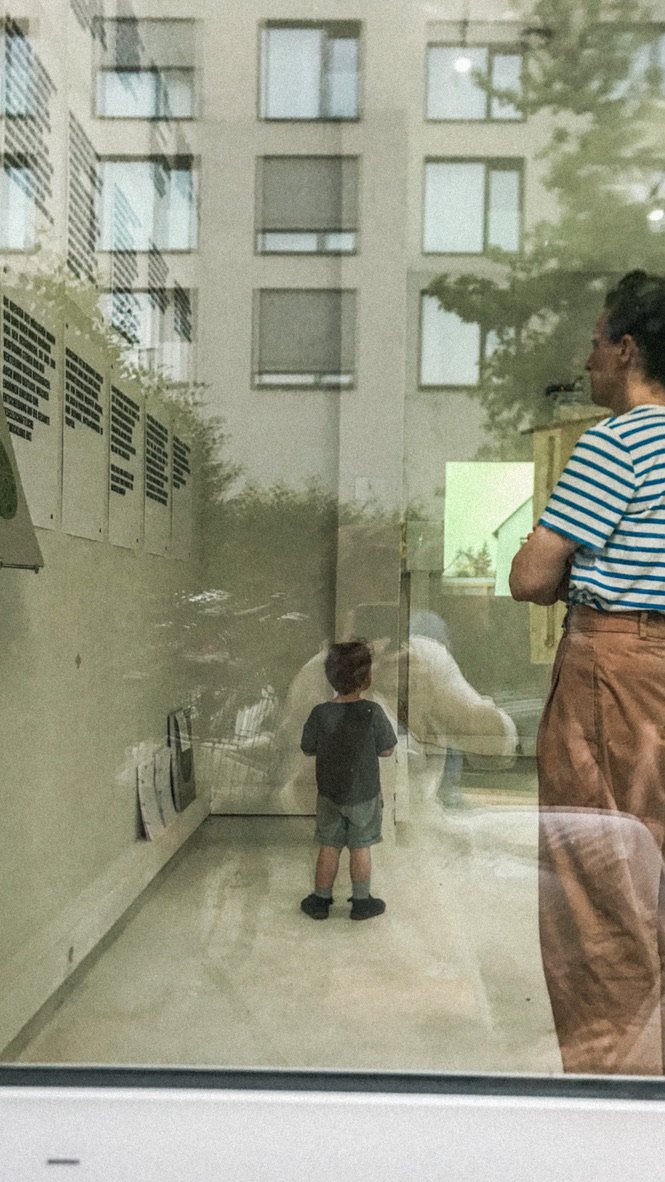Interview #28 Athena Rombach
Please introduce yourself:
Athena Isabella Rombach, holding a Bachelor of Arts degree from the RheinMain University and a Master's degree in architecture from the Düsseldorf Art Academy, lives and works in Leipzig.
My focus of interest lies in the potentials of communal living within built structures. What impact do we have on architecture, what influence does architecture have on us? Does it offer us protection and opportunities for personal and social development, or does the way we currently construct our cities turn into doom for us, for humankind?
Go beyond the bubble and stay informed about the world and social developments. Observe society. Keep an eye on changes. Be aware of the responsibility that the profession involves. Enjoy studying. Stay curious. Share your knowledge. Work together and with each other. Support each other in your studies.
#1 Your master's thesis at the Kunstakademie Düsseldorf was dedicated to the subject of "deconstruction of social conventions and architecture". Can you tell us more about it:
I started working on my thesis in 2020, when the lockdown brought me to a small settlement on the outskirts of Frankfurt a.M. During my daily strolls the settlement presented itself to me as a timeline of built structures demonstrating the qualities of century-old buildings and the poor quality of design and material of contemporary buildings. It was not clear to me how the well-documented urgency to reach a CO2-balance and the practice of erecting CO2-intense, but otherwise meaningless masses, of gray-white houses fit together in today's enlightened Western world.
My book is supposed to function as a kind of guide and raises questions like: How did it come this far? Where are we now? What are our problems? What are they resulting from? And from this I turn to questions like: What has history taught us? How can problems be solved? If we want to achieve democratic change with new building laws, how could this work? Right up to a draft for the aforementioned settlement, a draft that follows the new set of rules, laid down by me in my book.
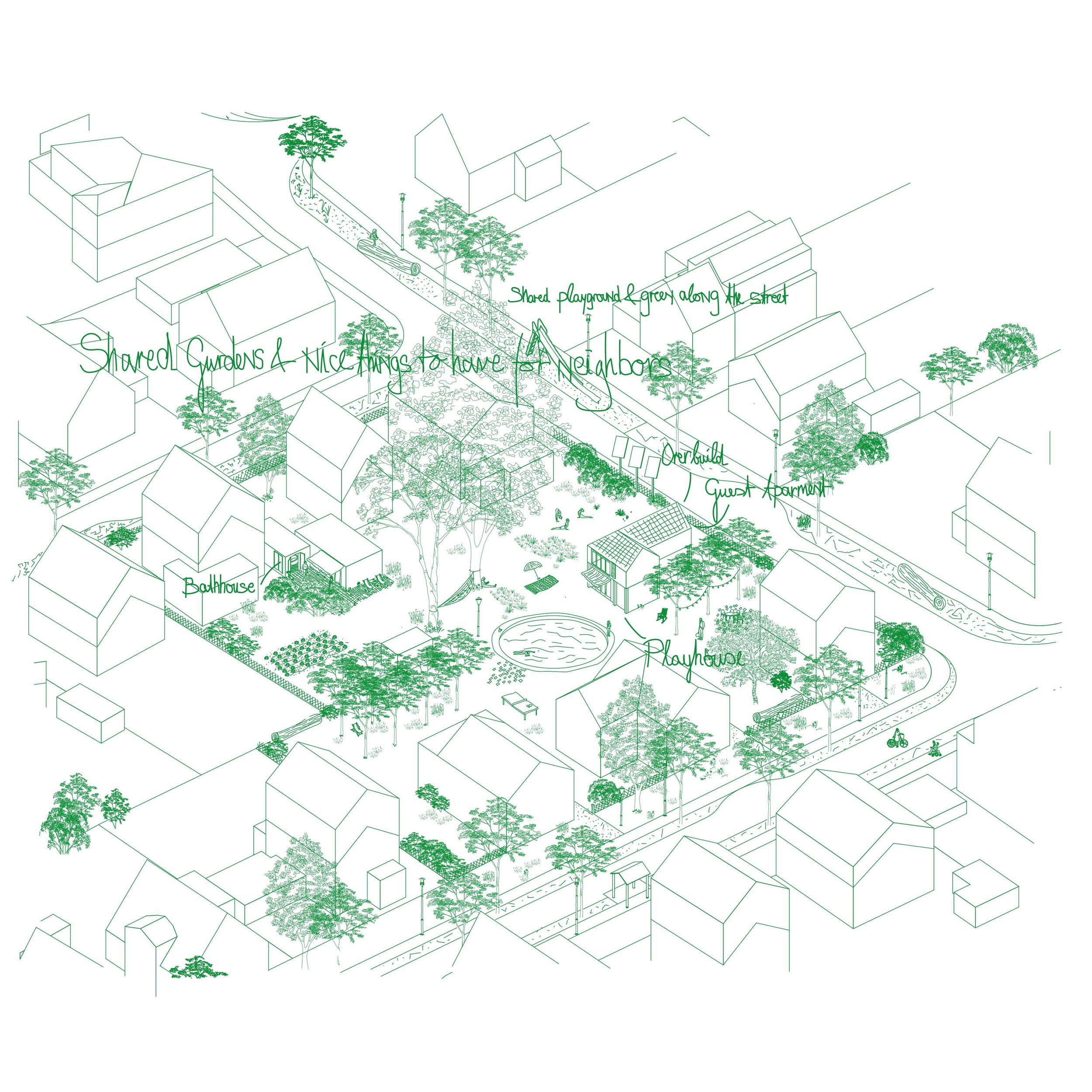

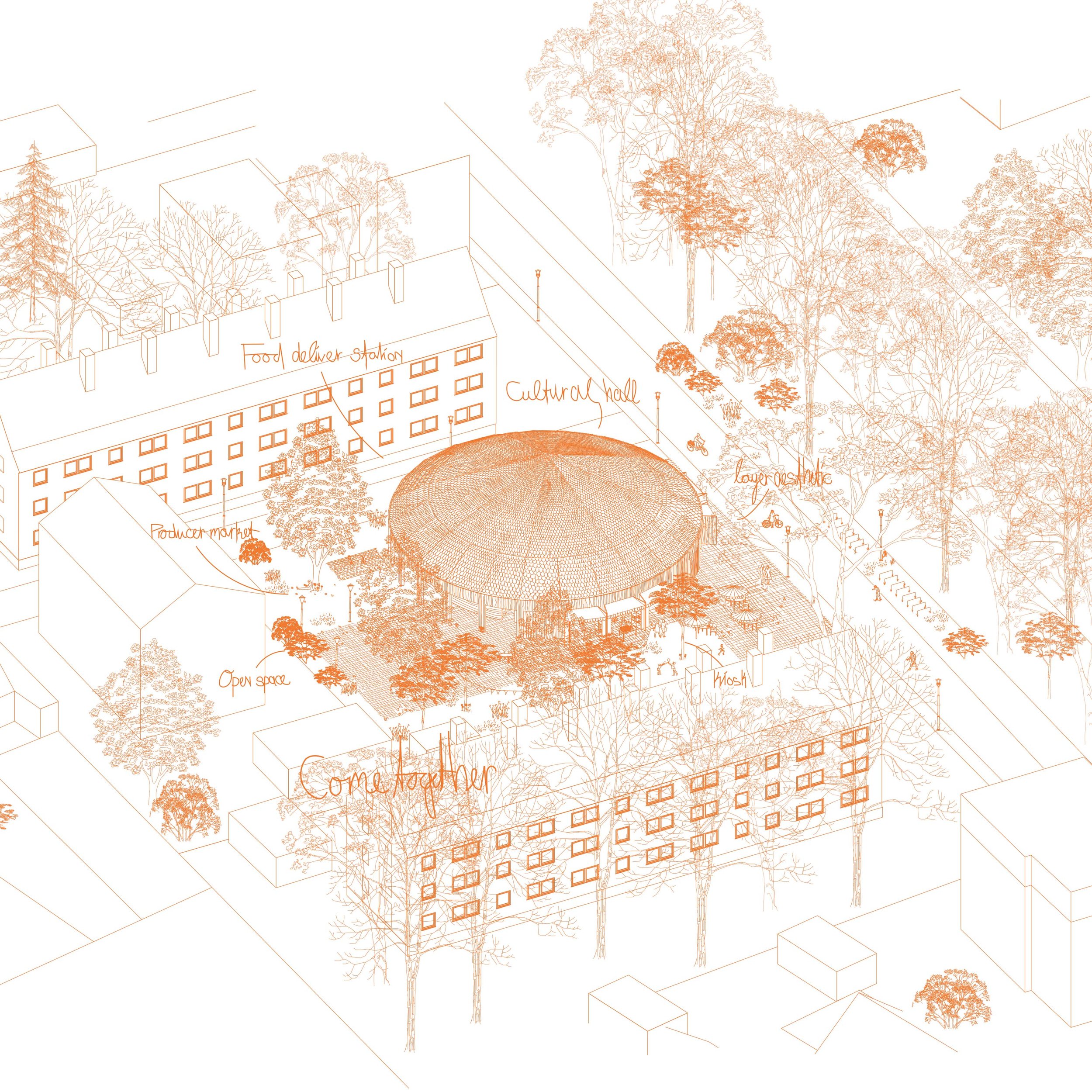
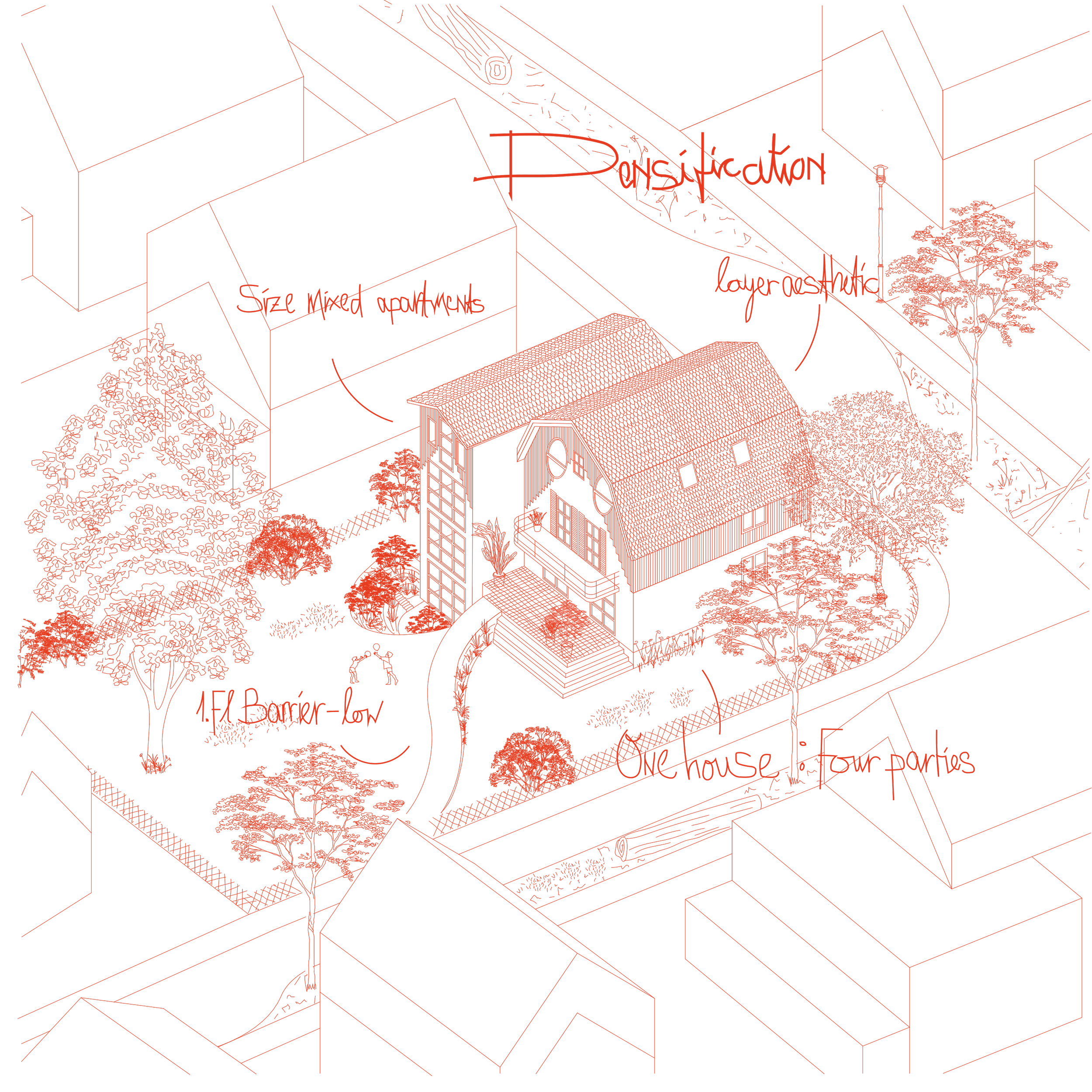
#2 Following your final presentation, you organized a separate, interactive exhibition of your project. How did this come about and what did you gain from it?
Manuel Ruf saw my work during the Rundgang of the Kunstakademie (a biannual show of the graduates’ works) and invited me together with Thisbe Tauer as to present our work in his gallery called “15 weeks” (by the way, the first time that he invited BaukünstlerInnen, i.e. architects). He emphasized several times his surprise and enthusiasm that someone from the architecture class was finally dedicating herself to the pressing themes of our time. Until that day he had solely invited artists from the fine arts, even though he himself has a background in architecture and also works in that field. So it was really encouraging for me, when Manuel told me that he has read the whole pamphlet and thinks it's great, that was really wonderful.
At the time, Benita Thisbe Tauer was working on “The Third Skin”, which only at a second glance has anything to do with architecture. The collaboration with Benita Thisbe was fascinating for me: we discovered that even though we express ourselves so differently, we deal with very similar topics. I always find it very valuable to find out that you are fighting for similar issues individually but also together with others.
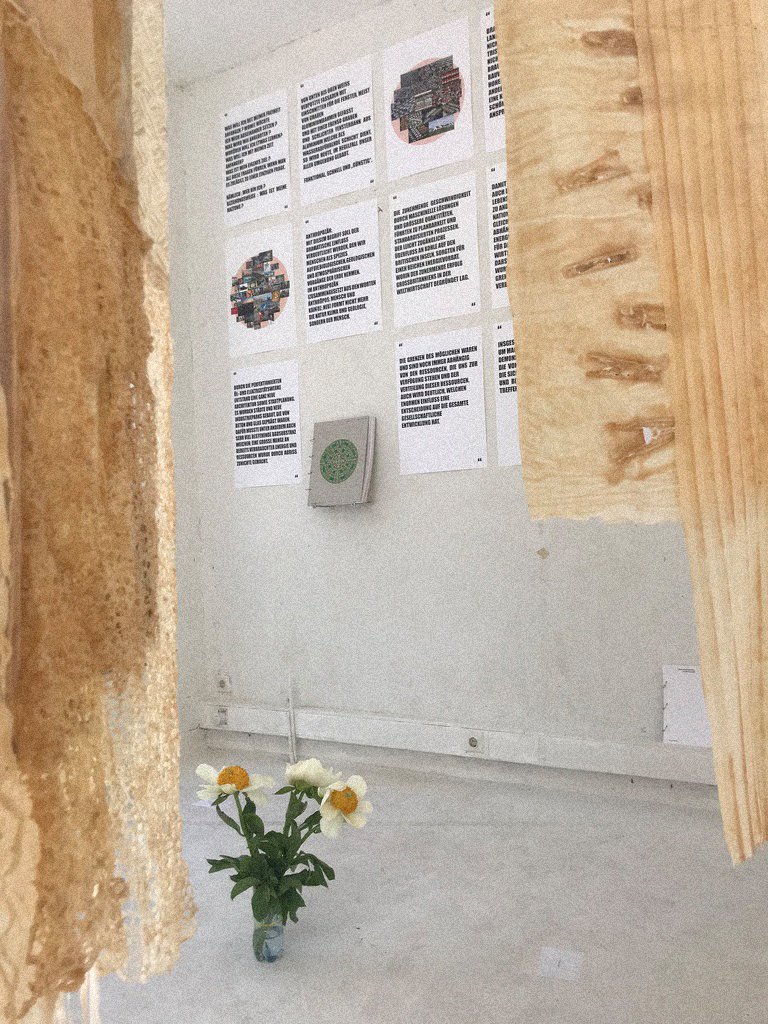
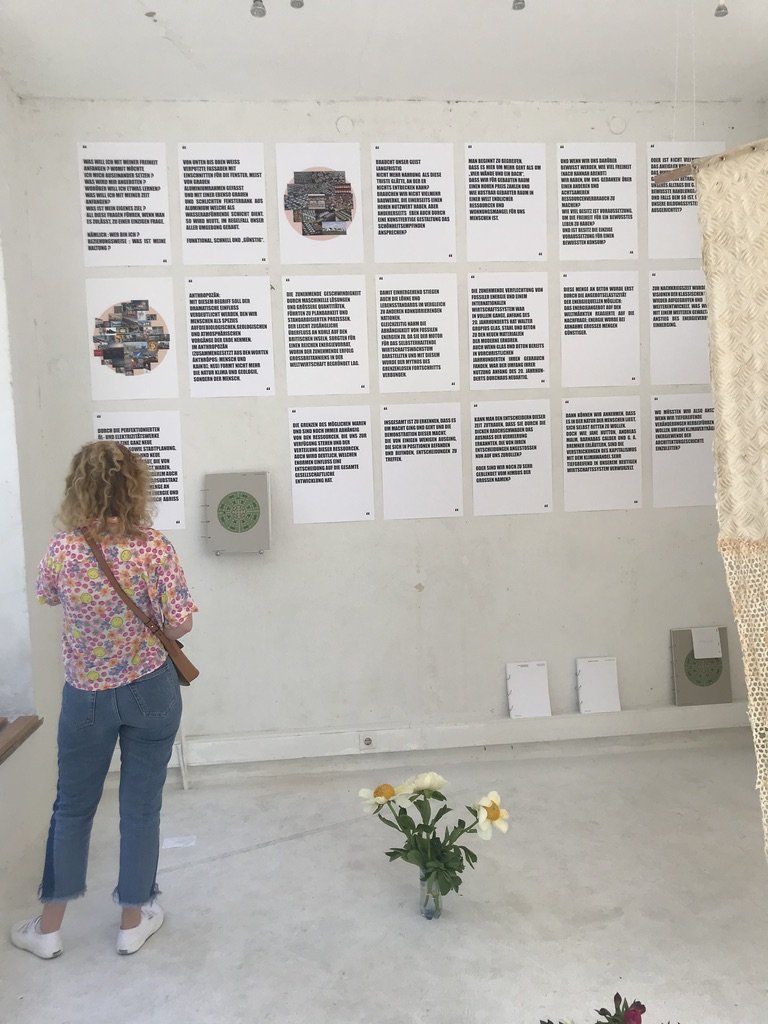
Photos: © Athena Rombach
All those conversations that came about through the exhibition were very inspiring for me. Towards the end of our exhibition "Mit Haut und Verstand", Manuel Ruf invited guests to an art talk, facilitated by the renowned painter Thomas Kohl, in his youth a masterclass student of Gerhard Richter. It ́s been very remarkable how Thomas Kohl interviewed us exhibitors, asking the right questions. And he also involved the visitors into the conversation and thus widened the horizon. That made the exchange so particularly refreshing.
It is so encouraging for me, to see that people are interested in my work and buy my book, because that shows concrete support and gives evidence that the subject I am working on is important also to others.
Apart from all the reactions, I have to say, it’s an amazing feeling to write a book simply because you feel that urge to write it.
#3 What projects are you working on right now?
During the making of my book and on the occasions of the Rundgang at Kunstakademie and the show at “15 Wochen”-gallery I noticed that my work received a lot of attention, I had the feeling that there is a general need for this kind of view on contemporary architecture. I therefore wanted to make my book accessible to a larger audience: Among other things, you can now find a large part of the visual work on my new website; athenarombach.com.
Together with the artist Florian Glaubitz I am currently working on the preparations for an exhibition in the old spinning mill in Leipzig. We want to feature contemporary artists from the Kunstakademie Düsseldorf, HGB Leipzig and the UDK Berlin. I do not want to say much, it is currently all in the making. I will tell you more about our project when everything is in the dry, of course.
#4 What advice would you give people studying architecture?
Ensure that the learning content is really up-to-date with what is needed in society. Ask for topicality in the assignments. Research your teachers: How relevant is their work for the making of future? Ask for excursions and internships in areas that are relevant for your ideas. Go beyond the bubble and stay informed about the world and social developments. Observe society. Keep an eye on changes. Be aware of the responsibility that the profession involves. Enjoy studying. Stay curious. Share your knowledge. Work together and with each other. Support each other in your studies. If necessary: study longer. Take care of your mental health. Show courage. Believe in the difference you are making with your work.
#5 What is your favorite aspect of your job?
The impact that good spaces can have on society.
#6 What are your next steps?
It is disturbing to see how dysfunctional tyrants are keeping us all on our toes with their deadly power games – whilst there is so much work out there that urgently needs to be done. I want to focus on working for a better life for everyone. That is my priority right now.
Apart from worrying about global threats: I'm very intuitive. I never know exactly when it will hit me and what I'll do next. Basically, I like to work on things that can make life better for many people in the long term.
And then I'm looking forward to the exhibition I mentioned, for which I will create a work together with Selina Redeker.
Photos: © Athena Rombach
#7 How do you see the role of an architect in today's society?
I think that architects and planners have a very responsible and clearly underestimated role. While every individual furnishes themselves in the best case with practical tools, beautiful emotions, empathy and sincerity and presents this furnishing to the outside world, a planner does the same in a much bigger context, namely in the public space that belongs to everyone in society. Therefore planners must not only have themselves in mind, but the needs and wishes of many and also the constant transformation that a society undergoes. There are many different factors that need to be taken into consideration to create a sustainable living space. Sociology, law, materials science, statics, acoustics, climate conditions, human comfort (at this point I want to mention the book "Cities for People" by Jan Gel). That’s quite a lot and it takes good cooperation of many minds to achieve good results. It must be recognized that no project is a "work of art" by just one person. The belief in a god-like single creator architect belongs to a bygone era.
Personally, I find it astonishing that the building revolution is only just beginning, as the facts have been on the table for decades. I find the carelessness of previous architects astonishing, considering that thoughtlessly built space can destroy the basis of life for us all.
#8 How does your environment influence your work?
There is probably nothing that influences my work more. I look at examples of what works, how long it works, how it works, in what way things have an influence. I draw my fundamental insights from this, learn from it and transfer the findings into my work.
What really fascinated me when I was checking out the offices here in Leipzig, was, that there are many offices that have at least two, but certainly more buildings in their portfolio that they have refurbished - or continue to build. The Voigt office, for example. I think this pragmatic approach is a big advantage over the offices in the West of Germany. The same applies also to the general mindset of the urban planning offices, whose designs, for example at Oktagon Kollektiv, are absolutely progressive, forward-thinking and people-centred. Sustainability here is more than a word for the brochure - instead it’s hands-on.
#9 Three things that inspire you at the moment:
The people close to me, music, things that fail.
#10 What do you currently read, watch, listen to?
Most recently I went to see „Poor things“ at the movies. That was impressive.
Music is the most beautiful art form that humans can create. At the moment I'm listening a lot to Courtney Barnett again, recently I've been really into Little Simz, or friends of mine Bijan James (you can give that a listen ;) ) and I play lot ́s of electronic music.
I like reading. “Tausend und ein Morgen“ by Ilja Trojanow, Saint-Exupéry’s „Nachtflug“ - „Das Unheimliche“ by Sigmund Freud, Stefanie Sargnagel‘s „Iowa“, next up is „Das siebte Kreuz“ by Anna Seghers. One of my favourite books, however, is "Die Freiheit frei zu sein" by Hannah Arendt. That book is particularly important to me.
In this sense: Those who have the freedom to be free have everything they need to think beyond the boundaries of the familiar. They have the freedom to act. What kind of world do we want to live in? The world needs utopias and boundaries exist primarily in our heads. Let us give it a try and make a change for the better. I guess it is up to us.

